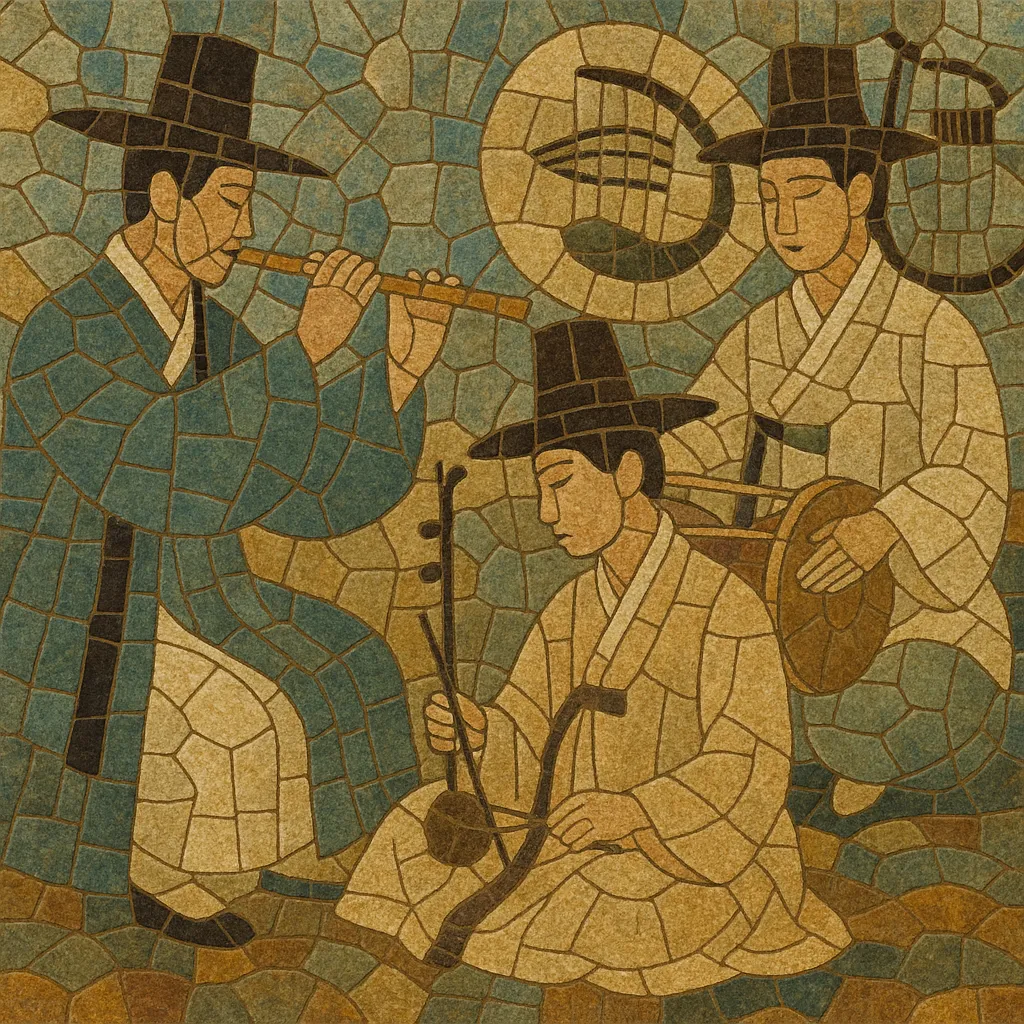Jeongak is the refined classical court and aristocratic music of Korea, encompassing ritual (aak), Chinese-derived (dangak), and native court (hyangak) traditions under a broader aesthetic of elegance, restraint, and balance. It is performed on an ensemble of wind, string, and percussion instruments such as piri and daegeum (oboes and transverse bamboo flutes), haegeum (two‑string fiddle), gayageum and geomungo (zithers), and various drums and gongs.
The style emphasizes calm tempi, cyclical rhythmic patterns (jangdan), heterophonic texture, and subtle ornamentation (sigimsae and nonghyeon). Core repertory includes suites like Yeongsanhoesang and Boheoja and the stately music for royal ancestral rites (Jongmyo Jeryeak). Jeongak is closely associated with Confucian court culture and literati ideals, privileging poise, precision, and contemplative beauty.
Jeongak’s roots lie in the courtly and elite music-making of the Korean peninsula, crystallizing from earlier ritual and ceremonial practices. During the Three Kingdoms and Unified Silla eras, aristocratic music coexisted with Buddhist and indigenous traditions. By the early Goryeo dynasty (from 918), court institutions began to systematize repertoires and ensembles, laying the foundation for a refined, ceremonial sound.
In Goryeo, large-scale importations of Chinese court music (aak) and the cultivation of Chinese-derived repertories (dangak) were integrated with native court music (hyangak). This synthesis, curated within official music bureaus, produced a distinctive Korean court idiom—measured, hierarchical, and finely ornamented—that we recognize as jeongak.
The Joseon dynasty (1392–1897) fully codified jeongak aesthetics. The court developed the square-grid notation system jeongganbo in the 15th century and compiled theoretical and organological treatises such as Akhak Gwebeom (1493). Court rites at the Royal Ancestral Shrine (Jongmyo Jeryeak) and civil/banquet ceremonies standardized ensembles, modes (ujo and gyemyeonjo families), and cyclical meters (jangdan). This period also fostered secular suites like Yeongsanhoesang and Boheoja, performed by professional court musicians and literati.
With the end of the monarchy and social change in the 20th century, court patronage receded, but state institutions and cultural heritage programs in Korea preserved and revitalized jeongak. The National Gugak Center and regional centers reconstructed instrumentation, performance practice, and notation, ensuring continuity. Today, jeongak is performed in concert halls and rituals, informs contemporary composition (changjak gugak), and remains a symbol of Korea’s classical heritage.


